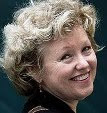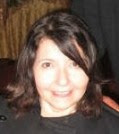Note: After writing this column, Georgeanne left for a three-week journey to India, to lead a tour for the San Diego Zoo. Two days later, on February 19, 2013, Dorothy Irvine passed away. We at San Diego Writing Women offer our sincerest condolences to Georgeanne and her family.
By Georgeanne Irvine
It’s always rewarding when people are touched by something
I’ve written. I’m truly amazed by the unexpected
responses I received from a short story I wrote late last year about appreciating
and cherishing who my 94-year-old mother is now, even though Alzheimer’s has
ravaged her mind and her vocabulary.
Initially, I wrote and posted it as my Writing Women blog on
December 7, 2012: Mom’s Limited World of Words: Priceless. But then, in light of the
Sandy Hook Elementary School tragedy, I decided I didn’t want to send out my
usual Christmas letter featuring funny animal stories and tales of my travels.
Instead, I sent out a version of my mother’s story with the preface: “’Tis the
season to reflect on the people we love in our lives and truly appreciate them
for who they are.”
The notes and emails poured in, and I also received phone
calls and exchanged many in-person conversations about my mom and her
situation. I heard from friends in faraway places such as India, Australia, and
Europe. Many people confided that they were dealing with the same situation
with a spouse or parent. Others said they shared the story with their friends
and family. Some, who had no personal experience with an Alzheimer’s patient were
thankful for information about this debilitating brain disease. A friend, who is a columnist for a major
publication, was moved by the story and hopes to use excerpts in a future
column.
For me, the overall experience of writing the story and
hearing back from so many people has been incredibly healing to me
emotionally. It has also made me even
more aware of everything Mom says—so much so that now I take a notepad with me
every time I visit her just in case she says something special. I now have both an email file and a hard file
labeled “Mom Said” for my notes.
Since I wrote the story in early December, Mom has provided
me with several more “gift moments” to treasure. She rarely speaks at all anymore but a few of
my favorite gems are below.
At the dinner table, Mom hiccupped. I was surprised when she piped up with
“Excuse me.” Another evening at dinner
she coughed, pointed at her chest, and said, “There’s something bad in there”
followed by “I think it’s getting better.”
My favorite dinner conversation was when the dining room emptied out and
I asked Mom where everybody went. Her
response was, “Did they die?”
A few other brief conservations just plain tickled me! This
first one didn’t make much sense, but at least it was an exchange between us:
I said, “Hi Mom. I’m
Georgeanne.” She paused for a moment and said, "And I'm Mrs.
Smith." I'm not sure who Mrs. Smith
is but at least she comprehended what I was saying. Her comment made me giggle, which made her
smile. Then I asked, “What did
you do today?” Mom replied, “Well, we
cut the cashews,” which resulted in another giggle from me and another smile
from Mom.
This next conversation happened in early January when Mom
was particularly alert and surprisingly very perky—I’d have to rate it as the
best one of this year. She kept talking and
making incomprehensible comments while we were listening to live music after
dinner. Then she said something that
sounded like “Is it going to rain this week?”
I wasn’t sure that’s what she said so I asked, “Is it going to rain this
week?” meaning, is that what you asked?
Her response was priceless: “I
don’t know. I’m asking you.”
However much time Mom has left on earth is anyone’s guess. She
could live to be 100 or she could be gone tomorrow. What I do know is that treasuring every moment
I spend with her, keeping track of her words, writing about her, and sharing
her story with others is helping me in more ways that I ever imagined.
San Diego native
Georgeanne Irvine has devoted more than three decades of her career to raising
awareness about animals and wildlife conservation. By day, she is associate
director of development communications for the San Diego Zoo, where she has
worked for 35 years. George is also the author of more than 20 children’s books,
plus numerous magazine, newspaper, and Web articles. George’s most recent work
is the coffee table book, The Katrina
Dolphins: One-Way Ticket to Paradise, which is a true story about 8
dolphins from an oceanarium that were washed out to sea during Hurricane
Katrina in 2005 and dramatically rescued a few weeks later.













